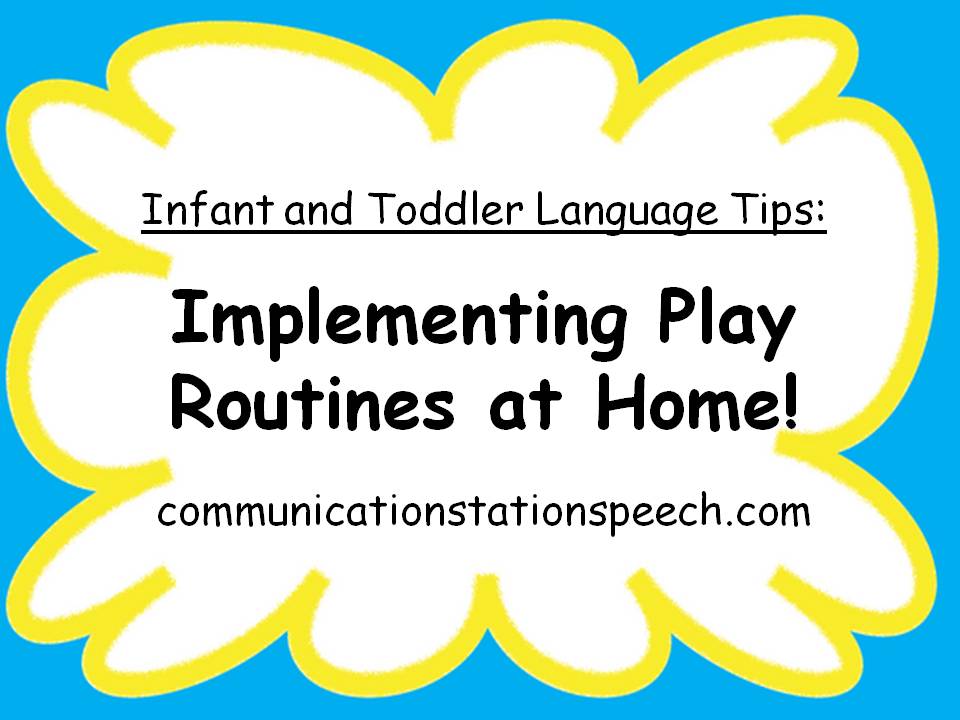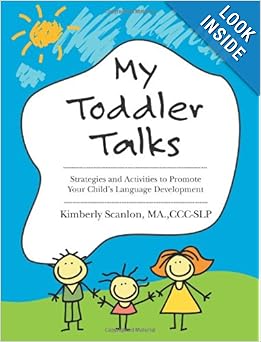Tip Tuesday: Implementing Play Routines at Home!
Last week we talked about what play routines are and how I choose the activities/toys to create a play routine (you can find that post here). This week we will discuss what a play routine looks like and how I implement play routines.
Firstly let’s begin with an example of what a play routine looks like. When creating a play routine with blocks, I may take turns with a child dropping blocks into a dump truck. Every time I drop a block I will say one word (“in”, “bang”, “drop”, whatever word I think the child will be able to imitate) with enthusiasm over and over again modeling numerous productions of JUST THIS ONE WORD. I usually smile, laugh, giggle, and even tickle the child after my production of that single word as I want the child to see just how FUN putting blocks in the dump truck can really be! I’m creating a play routine that shows the child, every time I drop the block I say this one word. Sometimes this is all I will have to do and the child will illustrate his/her need to join in the fun by imitating the word after me or while he/she is performing the action. If a child does not try to say anything independently, after numerous models (10, 20, etc.), depending on the child’s interest and motivation, I may manipulate the environment by moving all the blocks out of reach of the child (placing them where I have access, possibly next to me or behind me). This way I can hold up a block and look expectantly at the child. If the child attempts to say the word, I respond to the vocalization by dropping the block and a huge celebration ensues. We continue this way until all the blocks have been dropped in the dump truck. Then I may change the routine and take each block out of the truck while saying “out” (every time), or I may DUMP all the blocks on the floor making a huge mess saying “dump”, etc. Either way, I will laugh and laugh, showing the child how much fun it really is to play with the blocks in this manner. And now I have just added a second routine to the play (either by “dump”ing or taking the blocks “out”). As we continue to play with blocks we can add more routines and more words. Maybe we could build 3-4 block towers and knock them down by saying “bang, crash, down,” etc. Or maybe we add the word “more” to request more blocks when the child runs out of block when we are dropping, dumping, or building. And by the end of play period with this one toy/activity, you can easily facilitate several words simply by creating play routines.
How do you implement a play routine? Here are my 3 simple steps to creating a play routine at home (once an activity has been chosen):
1. Create a turn taking activity: where you and your child have adequate number of materials/opportunities to exhibit a simple action. (ex. rolling a ball back and forth to each other, hitting a nail into a play tool bench, blowing bubbles-your child may not be able to blow, but you can take turns popping the bubbles, etc.)
2. Choose 1 word that best describes the action OR that meets the child’s need: you can use words that the child may use for the same social purpose in various situations (ex. using “more” to request can be used in any play activity, while eating, etc.) or you can use a word that labels or describes the action (ex. bubbles-“pop”, hammer nail-“bang”, roll ball-“roll”, etc.)
3. Model numerous times then expect the child to imitate: probably the biggest step in this process is to make sure you repeatedly model the SAME word (and ONLY THAT word, no other talking) over and over again, with HIGH AFFECT (you are excited and happy to be playing with your child and you are showing that on your face, in your tone of voice, and in your body language). After numerous trials you can use a delayed response (10 secs +/-) where you sit holding the object waiting for the child to imitate the word. If the child does not response you can model again and ask the child to imitate. Any productions can be accepted initially and communication rewarded. Over time the responses can be shaped into close approximations of words, completed words, than finally phrases and even sentences.
And that is is! Three simple steps to implementing a routine! If your child does not respond favorably to a routine you have implemented it could be for a number of reasons:
1. Lack of interest/motivation in the activity.
2. Activity is too challenging for the child.
3. The word you are using is too challenging for the child.
4. The child does not see the activity as fun to do!
5. The child may be responding to your frustration or anxiety in the situation.
Looking for some more ways to create play routines at home or in a child’s natural environment? Whether you are a parent, speech-language pathologist, developmental interventionist, infant/toddler service provider, or early childhood educator, I highly recommend you investing in Kimberly Scanlon’s book, My Toddler Talks: Strategies and Activities to Promote Your Child’s Language Development. It is a wonderful resource with page after page of play routine ideas and language facilitation strategies anyone can use in various environments (at home, in therapy, at a friend’s house, etc.) to encourage communication development!
Happy playing and talking!!!
 Disclaimer: This is an example of one way to use simple parent friendly techniques to encourage language growth in your child. Play routines is ONE technique. It DOES NOT take the place of speech therapy. If your child is resistant or unable to imitate language after you have attempted numerous play activities, I recommend you contact a local speech-language pathologist for further screening and assessment (as necessary).
Disclaimer: This is an example of one way to use simple parent friendly techniques to encourage language growth in your child. Play routines is ONE technique. It DOES NOT take the place of speech therapy. If your child is resistant or unable to imitate language after you have attempted numerous play activities, I recommend you contact a local speech-language pathologist for further screening and assessment (as necessary).


No comments yet.